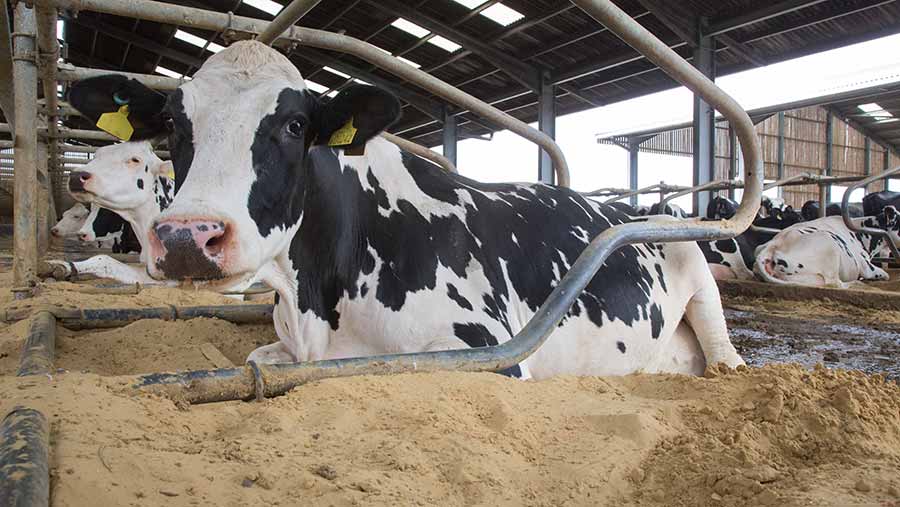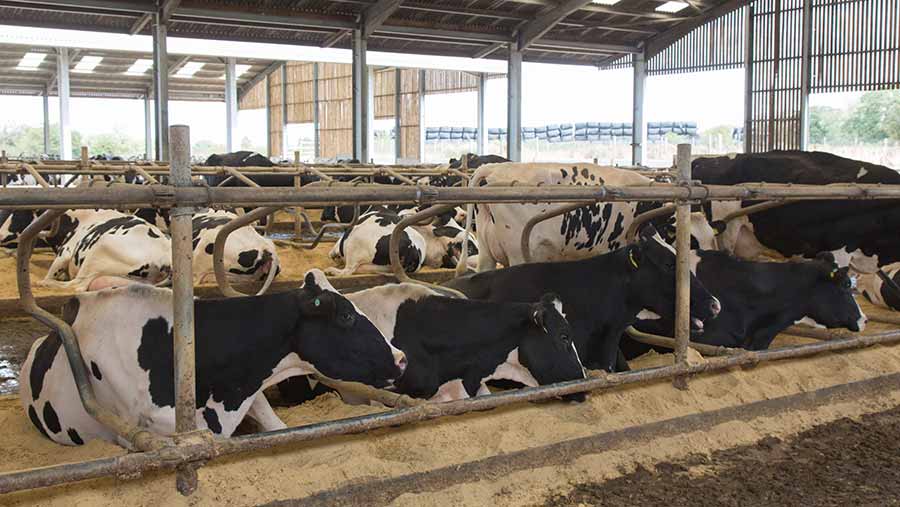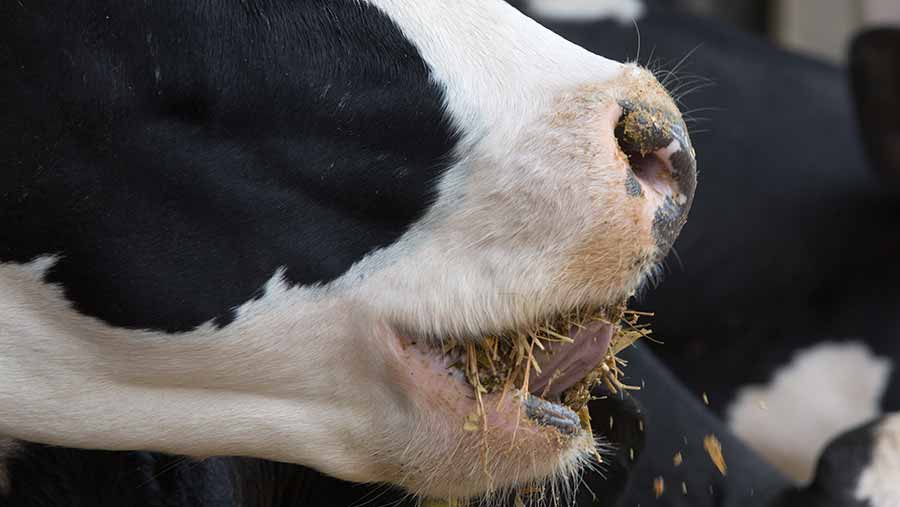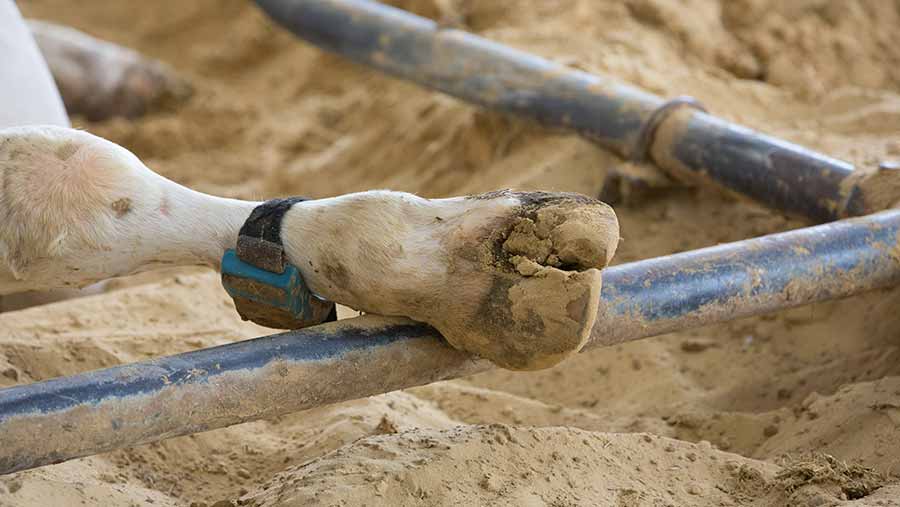5 tips to prepare for dairy winter housing
 © Tim Scrivener
© Tim Scrivener Plans for winter should ensure every aspect of cow management is geared towards optimising performance.
With this in mind, Farmers Weekly spoke to advisers and vets to find out what key areas farmers should consider in preparation for winter.
1. Address cubicle comfort and feed access
Look at cubicle design and feed access and identify where improvements can be made prior to housing, says Kite consultant Sam Evans.
“Lack of feed barrier space increases the risk of lameness as cows are pushing for feed. It also increases diet variation, as some cows will be waiting for feed,” he explains.

© Tim Scrivener
He also stresses the importance of maximising cow comfort and ensuring cubicles are set up to promote cow comfort, as this will lead to less lameness, improved production and better overall health.
He suggests
- Targeting a minimum 76cm of feed space a cow until they are in calf and 63cm once they are in calf.
- Thinking about improving trough surfaces by using plygiene or plastic on the base of the trough (cheaper than new concrete or epoxy resin).
- Targeting a 172cm cubicle bed from heel stone to brisket board, and a head rail that is 127cm from the floor for Holsteins.
- Looking at cow signals – cows perching with two feet in and two feet out is a sign the neck rail could be in the wrong place.
See also: Cow and calf nutrition for winter housing
2. Plan winter diets
Now is the time to look at what forages you have available and to plan winter diets.
With many farmers in mid-Wales having to delay second-cut silage due to wet weather, some producers could be faced with lower-quality silage stocks, which could put pressure on ration balance, explains Kite’s Sam Evans.

© Tim Scrivener
He suggests getting silage stocks analysed and testing fresh grass samples ahead of cutting if harvest had been delayed. This will open up conversations with the farm’s feed supplier so diets can be planned ahead of the winter.
“If you have a bulky, low-quality second cut, energy could become more important in bought-in feed and it may be appropriate to give liquid feeds to encourage intakes, while also acting as an energy source,” he adds.
3. Get on top of digital dermatitis
Hit digital dermatitis (DD) hard and get it under control before cows are housed, urges vet Nick Bell from the Royal Veterinary College.
“Housing is a stressful time [leading to immunosuppression] and that’s another trigger aspect for digital dermatitis,” he says.

© Tim Scrivener
He stresses that giving cows a “holiday” from foot-bathing while at grass is a mistake in the fight against DD. However, where farmers have reduced foot-bathing frequency, he recommends bringing cows back to a winter foot-bathing regime two to three weeks ahead of housing.
He adds: “My number-one recommendation would be – we don’t check DD levels enough, so hose off feet, check for DD and monitor.”
4. Empty slurry stores
Look to empty slurry stores while you can to free up space before winter, urges planning consultant Alex Lawrence from Reading Agricultural Consultants.
“If you can’t spread in line with maximum application rates, look to negotiate spreading agreements with local farmers,” he adds.

© FLPA/REX/Shutterstock
Installing reception pits to collect run-off from silage clamps and other dirty water areas can also take pressure off slurry stores.
5. Track body condition
Low milk price has caused some farmers to cut back on feed rates, leading to a higher incidence of lower-conditioned cows.
“I am seeing more cows not in the optimum body condition of 2.5-3 – they are maybe 0.5 of a condition score off where they need to be,” says Kite’s Sam Evans.
With this in mind, now is the time to assess herd condition and ask how these cows can be given the best possible start around calving. This should be focused on promoting cow comfort and dry matter intakes (see tip 1).
